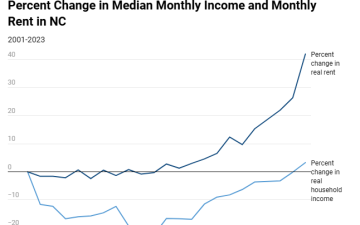The SUDDEN research project at the UNC School of Medicine investigates all sudden unexpected deaths among adults ages 18-64 that occur outside of a hospital. Piloted in Wake County in 2013, the project seeks to understand risk factors for both cardiac and non-cardiac deaths.
Ross J. Simpson, the lead SUDDEN PI and a cardiologist, wanted to expand his research study beyond Wake County. He approached Carolina Demography with a question: With limited budget and time, which counties in North Carolina, South Carolina, and Virginia should his team focus on in order to obtain a sample that would be representative of the at-risk population and yield enough sudden death cases for statistical analysis?
The researchers wanted a list of counties that were representative of their states, contained specific sub-populations of interest, and took into account geographic dimensions.
Using multiple data sources, Carolina Demography compiled county indicators to identify the top counties to prioritize based on the objectives of the research team. The indicators included:
The indicators were provided in the format of choice for the research team, along with county-level data in an interactive mapped format to explore in Tableau. In addition, our GIS specialist evaluated spatial methods for the SUDDEN team to use for data analysis after collection and developed a written summary for use in future proposals.
The materials helped the SUDDEN team target their efforts to recruit participating agencies for data collection. They had limited time and budget and needed to know which communities to prioritize to ensure that the resulting data set was representative, sufficiently covered the at-risk population, and yielded enough sudden death cases for statistical analysis.
SUDDEN: Sudden Unexpected Death in North Carolina
To identify locations for research project recruitment, based on researchers’ needs

This blog post expands on a previous blog post that examined housing cost burden across NC by focusing on the disparities between housing cost burden for homeowners and renters. In North Carolina, 66.8% of occupied housing units are owner-occupied, while…

In recent years, housing has become a hot-button issue both nationwide and in our state, as many people struggle to find secure, affordable housing options. David Rouse, Ben Hitchings, and Anita Brown-Graham of the UNC School of Government’s ncIMPACT Initiative…

In recognition of Veterans Day, Tuesday, November 11th, we are providing some statistics about North Carolina’s veteran population. The most current version was published on November 12th, 2025, with information from 2023 and 2024. Please note that the county veterans…
Your support is critical to our mission of measuring, understanding, and predicting population change and its impact. Donate to Carolina Demography today.